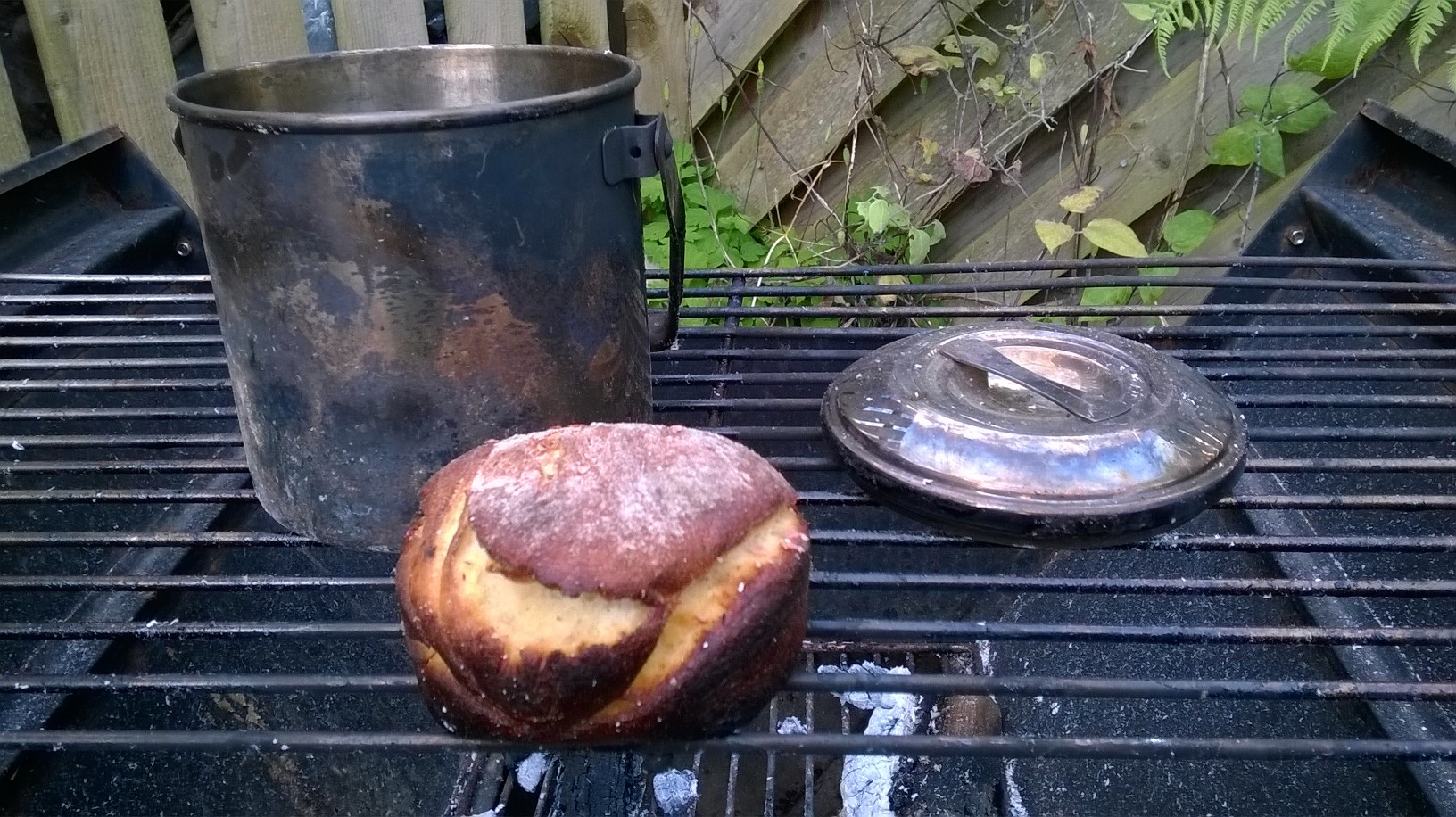Here is a Scottish bannock recipe claiming to be "traditional".
http://www.rampantscotland.com/recip...e_bannocks.htm
Tradition depends on everything from region and family recipe to available produce, and I don't believe there was ever such a thing as a traditional bannock. The bannock ranges from a simple oatcake to, at the luxury end of the scale, the Selkirk bannock, which is more of a fruit cake.
http://www.rampantscotland.com/recip...pe_selkirk.htm
To strive for the reduction of labour is universally common in human experience, so I choose to benefit from the tasks our forebears performed on a daily basis. As such, my personal preference regarding bread-making is to make girdle scone, also known as soda scone or white scone.
To compensate for the lack of ingredients our forebears would have to hand, I often carry a plastic squeezy lemon juice with me... you know the thing I mean? Unless you're in the habit of carrying a carton of yoghurt, buttermilk or a tub of your great-granny's secret formula bread starter with you, then try hydrating milk powder to make a fluid cupful and give it half a dozen drops of lemon juice. I don't know what chemical reaction the lemon juice causes in the dough, but it makes a light bread of what might otherwise be a chewy mass you'd have to prise off your teeth.
- 2 mugfuls strong flour
- 1 teaspoon of baking powder
- pinch salt
- pinch sugar
- enough milk/lemon juice mix to make a stiff dough
- Mix with a spoon, but don't over-work.
- Flatten into disc, but leave room to move in your frying pan.
- A smear of oil, butter or marg in pan, and cook over medium heat.
- Flip when one side is done.
- DO NOT be tempted to pat the scone down!
That's a simple bread, great hot or cold with savoury foods, but can be adjusted for a sweeter tooth.





